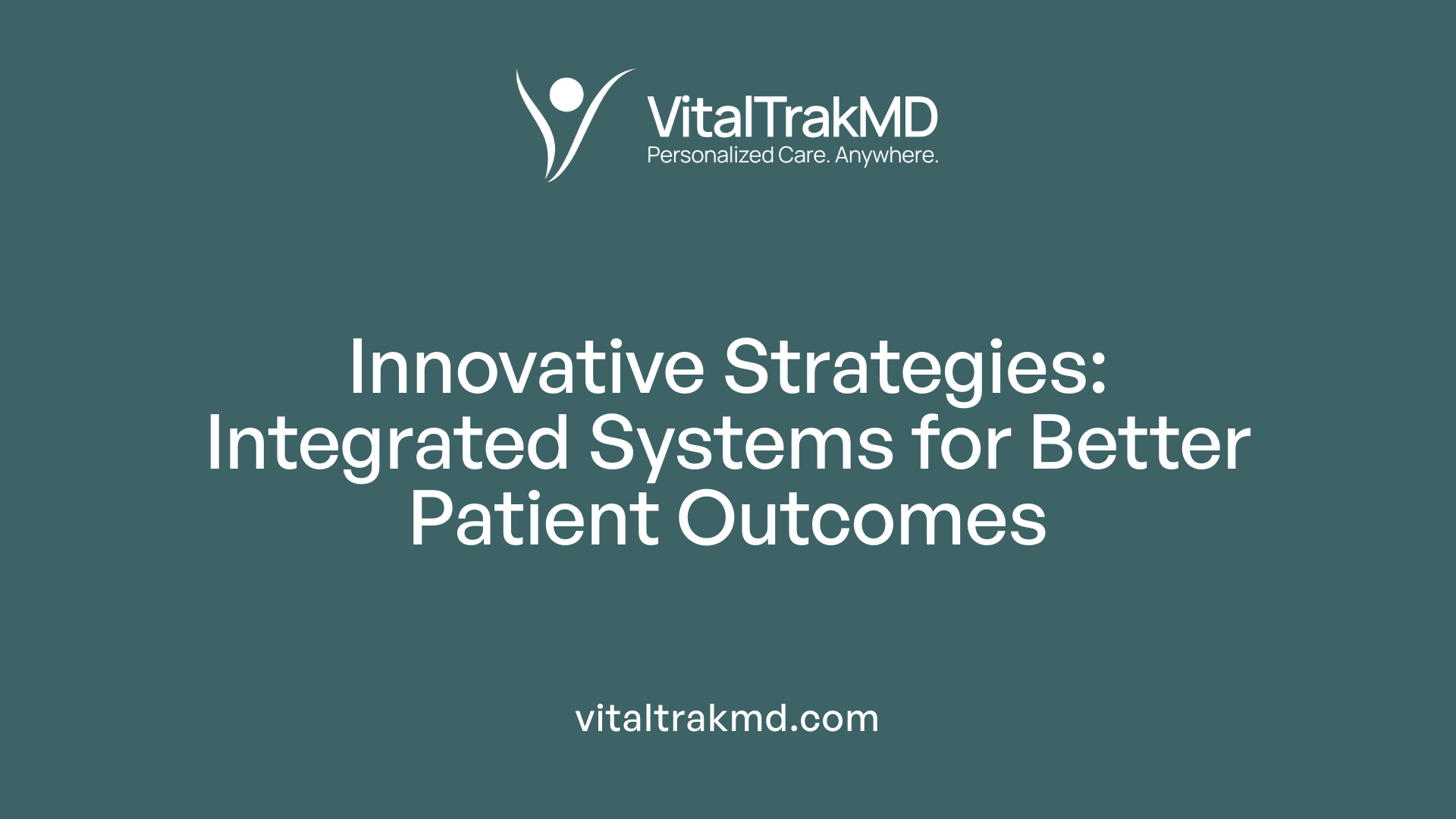Supporting Patients With Tailored Plans for Chronic Disease Prevention

Personalized Approaches that Transform Patient Outcomes
Supporting patients with tailored, evidence-based plans for chronic disease prevention is fundamental to improving health outcomes, reducing healthcare costs, and addressing disparities across diverse populations. Recent research underscores the importance of understanding geographic, demographic, and social determinants of health to develop personalized interventions. This article explores policies, frameworks, and practical strategies that empower healthcare providers, integrate technology, and foster community engagement to advance patient-centered chronic disease management.
Policymaking and Support Structures for Chronic Disease Management
 What policies and support structures exist to aid chronic disease management?
What policies and support structures exist to aid chronic disease management?
Governments around the world have put in place various initiatives and policies to better manage chronic diseases. One of the most prominent approaches involves the development of disease management programs (DMPs). These programs are designed based on the latest medical evidence and aim to deliver high-quality, coordinated care tailored to individual patient needs.
DMPs typically include creating personalized treatment plans that promote regular check-ups, self-management, and active patient participation. For example, countries like Germany have implemented voluntary and free DMPs for conditions such as diabetes, heart disease, and COPD. These are managed through statutory health insurers and healthcare providers, ensuring broad access and continuity of care.
In addition to DMPs, national health policies focus on the integration of primary care and the development of clinical guidelines. These guidelines assist healthcare providers in delivering standardized, evidence-based care. Moreover, the use of health information systems plays a crucial role by enabling continuous patient monitoring, data collection, and quality assurance.
Intersectoral collaboration is also vital. It involves coordination across various sectors—healthcare providers, community organizations, policymakers, and patients themselves—to ensure comprehensive support. Such cooperation helps address social determinants of health and promotes preventive strategies.
Overall, support structures for chronic disease management emphasize prevention, enhancing self-care capabilities, and fostering coordinated, multidisciplinary treatment approaches. These strategies aim to reduce the societal and economic burden of chronic illnesses while improving patient outcomes.
| Policy Component | Description | Example/Impact |
|---|---|---|
| Disease Management Programs (DMPs) | Structured care pathways based on research | Germany’s voluntary DMPs for diabetes |
| Clinical Guidelines | Standardized care protocols | National guidelines for hypertension |
| Health Information Systems | Data collection, monitoring, and quality control | Electronic health records enhancing care continuity |
| Community & Intersectoral Collaboration | Cross-sector partnerships to address social factors | Public health campaigns combined with healthcare services |
| Patient Engagement Policies | Promoting self-management and decision-making | Patient portals and health apps |
Through these targeted policies and collaborative systems, the framework for effective and sustainable chronic disease management continues to evolve, ultimately aiming to improve health outcomes and reduce healthcare costs.
The Critical Role of Preventive Care and Early Detection

What is the role of preventative care, early detection, and patient engagement in managing chronic diseases?
Preventative care is fundamental in reducing the burden of chronic diseases. It involves regular screenings, vaccinations, and advice on healthy lifestyles that help identify health risks early, often before symptoms develop. This early identification allows for timely interventions, which can delay or prevent disease progression.
Screenings such as blood pressure checks, blood sugar testing, and cancer screenings are essential tools in early detection. Vaccinations protect against preventable illnesses that can complicate existing chronic conditions. Coupled with lifestyle modifications like improved diet, increased physical activity, and smoking cessation, preventative care fosters overall health and resilience.
Patient engagement is vital to successful management. When individuals actively participate in their care—understanding their conditions, adhering to treatment plans, and making informed choices—they experience better health outcomes. Shared decision-making ensures patients' preferences and social circumstances are considered, making interventions more effective.
Care coordination enhances access to preventive services, ensures consistent follow-up, and addresses social and cultural barriers. This comprehensive approach of combining screenings, vaccines, lifestyle guidance, and ongoing support creates a holistic strategy for controlling chronic illnesses. Ultimately, it promotes healthier behaviors, reduces healthcare costs, and improves quality of life for individuals living with chronic conditions.
| Component | Purpose | Additional Details |
|---|---|---|
| Screenings & Vaccinations | Detect illnesses early and prevent complications | Regular blood tests, cancer screenings, immunizations |
| Lifestyle Modifications | Improve overall health | Diet, exercise, smoking cessation |
| Patient Engagement | Increase adherence and self-management | Active participation, education, shared decision-making |
| Risk Assessments & Diagnostics | Identify at-risk individuals | Surveys, blood pressure, blood sugar, imaging |
Understanding the interplay of these elements supports a proactive, patient-centered approach to chronic disease management, ultimately leading to better health outcomes and reduced healthcare utilization.
Developing Community-Based and Technology-Enabled Programs

How can program development support chronic disease prevention, especially in resource-limited settings?
Building effective programs for chronic disease prevention in areas with limited resources requires innovative, community-focused strategies. Engaging local populations is crucial to understanding the unique social determinants of health and designing tailored interventions that resonate with community needs.
Community engagement can foster social support networks that motivate behavioral change and improve health outcomes. This can include partnering with local organizations, community health workers, and faith-based groups to extend outreach and education.
Incorporating evidence-based practices such as community management programs and task shifting—training non-physician health workers to perform certain clinical tasks—can significantly enhance access to care. These approaches help manage workload and resource constraints while maintaining quality.
Leveraging technology is also vital. Modernizing health information systems, such as implementing electronic health records and data sharing platforms, facilitates real-time data collection and analysis. This enables data-driven decisions, better resource management, and streamlined communication among providers.
Mobile health solutions, including text messaging and smartphone applications, can deliver health education, reminders, and self-management support directly to patients. Telehealth services, such as virtual consultations, allow patients in remote areas to access specialist advice without traveling long distances.
Developing sustainable programs often relies on securing funding from multiple sources, like government grants, foundations, and local health initiatives. This financial support helps build capacity, train staff, and address barriers such as transportation and clinic accessibility.
When planning these initiatives, it’s critical to involve community members in the design and implementation process. Their insights ensure the programs are culturally appropriate and acceptable, ultimately leading to better engagement and improved health outcomes.
Resources and further reading can be accessed via online platforms that focus on resource-sensitive intervention strategies and community health best practices.
Enhancing Provider Competence Through Training and Education
Professional development plays a critical role in strengthening healthcare providers’ ability to manage chronic diseases effectively. Programs like the Chronic Disease Self-Management Program (CDSMP) offer evidence-based frameworks that improve providers’ skills in supporting patient self-care, problem-solving, and decision-making. These initiatives help clinicians foster stronger partnerships with patients, which are essential for personalized, coordinated care.
Incorporating social determinants of health into training enables providers to address broader factors affecting patient outcomes, such as socioeconomic status, education, and access to resources. Tools like the H&P 360 assessment model facilitate holistic care planning by considering these contextual factors.
Use of clinical pathways (CPWs) provides structured, standardized guidelines ensuring evidence-based management of chronic conditions like diabetes, hypertension, and heart disease. These pathways promote consistency in care and help providers tailor interventions to individual patient needs.
Additionally, ongoing education in lifestyle medicine, team-based care, and health coaching enhances providers' capacity to deliver comprehensive management strategies. By integrating these approaches, healthcare practitioners improve their competency, ultimately leading to better health outcomes for patients with chronic illnesses.
Designing Personalized, Evidence-Based Prevention Plans
What are the key components of personalized, evidence-based plans for chronic disease prevention?
Creating effective prevention plans for chronic diseases requires a comprehensive understanding of each patient's unique health profile. Central to this is risk stratification, which involves assessing factors such as age, gender, geographic location, health history, and biomarkers when available. This process helps identify individuals at high risk and guides interventions accordingly.
Tailoring lifestyle and medical interventions is crucial. For example, some patients might benefit from specific lifestyle modifications like diet changes or increased physical activity, while others may need targeted screenings or medication management. Incorporating patient preferences and social determinants of health ensures that plans are both feasible and acceptable.
Shared decision-making is a cornerstone of personalized care. Engaging patients through education and collaborative planning promotes adherence and satisfaction. Patients are more likely to follow through when their values and goals are prioritized.
Monitoring and adjusting care plans based on ongoing health data allows for real-time improvements. Regular assessments and feedback cycles help detect changes in health status, enabling timely modifications.
Addressing disparities, especially between rural and urban populations, is vital. Strategies such as telehealth, community outreach, and culturally appropriate education help ensure equitable prevention efforts. These tailored, evidence-based plans ultimately enhance disease prevention, improve health outcomes, and foster patient empowerment.
Future Directions in Chronic Disease Prevention and Management
What are current research insights and approaches in the field of chronic disease prevention?
Recent research in preventing and managing chronic diseases highlights a shift toward more comprehensive, technology-driven, and community-focused strategies. Researchers are now integrating genomics and risk prediction tools to identify individuals at high risk early on. Digital health technologies, such as mobile apps and telehealth, support personalized interventions and ongoing engagement.
Addressing social determinants of health and reducing disparities is a central theme. Community-based programs tailored to local needs demonstrate the importance of cultural competence and accessibility. Behavior change techniques, including promoting healthy eating, increased physical activity, smoking cessation, and stress management, are supported by digital platforms, health coaching, and self-management programs like the CDSMP.
Public health efforts leverage electronic health records, real-time surveillance, and data modernization initiatives to enable timely, targeted actions at both population and individual levels. These innovations aim to create a health system that is more proactive and personalized.
Overall, the current approach emphasizes multi-layered strategies, integrating technological advances, community engagement, and policy reforms. This holistic method seeks to sustainably reduce the global impact of chronic diseases through early detection, effective prevention, and tailored care that considers individual social and health contexts.
Towards a Patient-Centered Future in Chronic Disease Prevention
Supporting patients through tailored, evidence-based chronic disease prevention plans requires an integrated approach that combines policy support, community engagement, technological innovation, and provider education. Emphasizing preventative care and early detection, leveraging telehealth and digital health tools, and fostering multidisciplinary care teams are essential to overcoming current challenges and ensuring equitable, effective outcomes. Future research and policy development focusing on health equity, community involvement, and cutting-edge innovations will be critical in transforming chronic disease management from a reactive service to a proactive, personalized process that truly centers on the patient.
References
- Enhancing Chronic Disease Management
- Chronic Disease Self-Management Program
- Transforming care for people with multiple chronic conditions
- Telehealth Interventions to Improve Chronic Disease
- Promoting Optimal Health: The Vital Role of Preventative ...
- Chronic Condition Special Needs Plans (C-SNPs)
- Building Clinical Expertise to Address Chronic Disease ...
- Telehealth Interventions to Improve Chronic Disease
- Managing chronic conditions through telehealth
Recent articles
Want to Feel Better and Live Healthier?
Join hundreds of patients taking control of their health with personalized care that fits their life – not the other way around.
Rated 4.8/5 by 32+ customers







